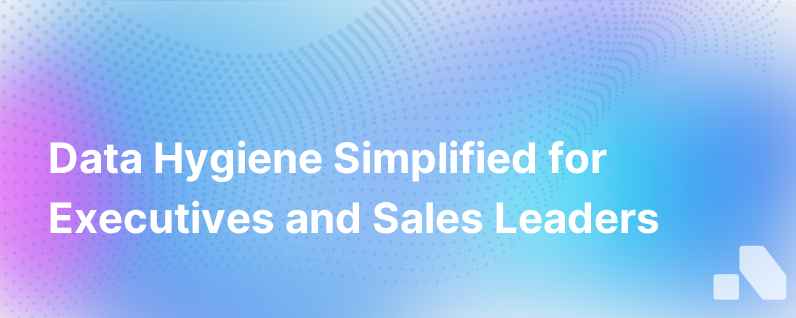
The significance of data integrity for businesses across sectors is undeniable. Data informs strategies, embodies customer insights, and is crucial for streamlined operations. However, the upkeep of this data, often referred to as data hygiene, is a task that many businesses dread. Common misconceptions include the belief that maintaining clean data is a full-time job, demanding significant hours and resources.
This article aims to debunk that myth, emphasizing that with the right processes and tools, data hygiene can be a manageable, semi-automated facet of your business operations, not a ceaseless chore.
Understanding Data Hygiene
Data hygiene is the collective processes involved in ensuring data accuracy, completeness, and consistency. Clean data equates to valid, formatted appropriately, de-duplicated, and updated information essential for various business analyses and intelligent decision-making.
Poor data hygiene can lead to faulty analytics, misleading insights, marred customer relationships, and, consequently, financial loss. However, despite its importance, data management does not necessarily require constant vigilance, thanks to advancements in technology and strategic planning.
The Myth of Full-Time Data Hygiene Management
The myth of data hygiene as a full-time job persists because of outdated practices. Manual data entry, sporadic maintenance schedules, and the absence of robust data governance policies might indeed turn it into an arduous, ongoing project. However, the solution isn't hiring more manpower for data cleaning but adopting smarter, systemic approaches that leverage modern technology.
Smart Strategies for Efficient Data Hygiene
Below are proven strategies to improve your data hygiene processes without dedicating countless hours:
1. Set Up Data Standards and Governance
Create clear guidelines on data entry and maintenance. This includes defining the correct formats, the type of data collected for various fields, and periodicity of updates. Data governance policies ensure everyone is on the same page and reduces errors at the data entry level.
2. Implement Real-Time Data Validation
Use software that validates data upon entry. This could range from simple form validations that check email formats to more complex CRM integrations that verify information against third-party databases. This immediate correction prevents the accumulation and propagation of inaccuracies.
3. Automate Data Cleaning
There are a multitude of tools available that can automate data hygiene processes such as de-duplication, normalization, and validation. These can run at scheduled intervals or in real time, significantly reducing the need for manual intervention.
4. Leverage AI and Machine Learning
Modern technology, such as machine learning algorithms, can recognize patterns, predict errors, and even suggest corrective actions to maintain data hygiene. These AI-driven tools are becoming increasingly accessible and can carry a significant portion of the data cleaning load.
5. Perform Regular Audits
Scheduled audits, rather than continuous scrutiny, can help catch and correct issues before they become systemic. With the right tools, you can generate automated reports that help you identify and tackle any inconsistencies.
6. Foster a Data-Centric Culture
Encourage staff to take an active role in maintaining data integrity. Small actions, such as double-checking entries, reporting discrepancies, and valuing quality data, can go a long way.
7. Use Cloud-Based Sharing and Storage
Cloud services ensure that data is synchronized across all platforms and stakeholders. This coherence minimizes redundancy and the need for constant updates across systems.
8. Prioritize Critical Data
Not all data is created equal. Identify critical data points that drive decision-making and invest more resources into ensuring these are maintained meticulously. For other, less critical datasets, a leaner hygiene routine may suffice.
Technology: The Game-Changer in Data Hygiene
The linchpin for transforming data hygiene from a full-time job into an efficient process is technology. Specialized software can automate many aspects of data management, reducing the manual workload.
CRM systems, for example, can be customized to enforce data entry standards and validate information in real-time. They can also identify and merge duplicates, append missing fields, and, using AI, can offer predictive insights to preempt data quality issues.
Another case in point is Aomni, an AI platform streamlining processes for B2B sales. Aomni incorporates AI to automate account research, ensuring that the data used to generate insights and strategic sales content is accurate and current. By converting real-time data into actionable competitive insights with minimal input, tools like Aomni significantly ease the burden of maintaining data hygiene.
Conclusion
Proper data hygiene is not contingent upon endless resources but on the establishment of intelligent systems and processes that prioritize accuracy, automation, and regular upkeep. Both SMBs and enterprises should look not to increasing staff for managing data but to integrating smarter practices and advanced technology.
By doing so, data hygiene becomes a manageable aspect of operations. It remains essential to remember that clean data is not a one-time setup but a continual process - one that does not require heavy lifting when done right. Integrating strategic tools like Aomni into your operation can significantly lighten the load, making data hygiene an efficient and less time-consuming endeavor.